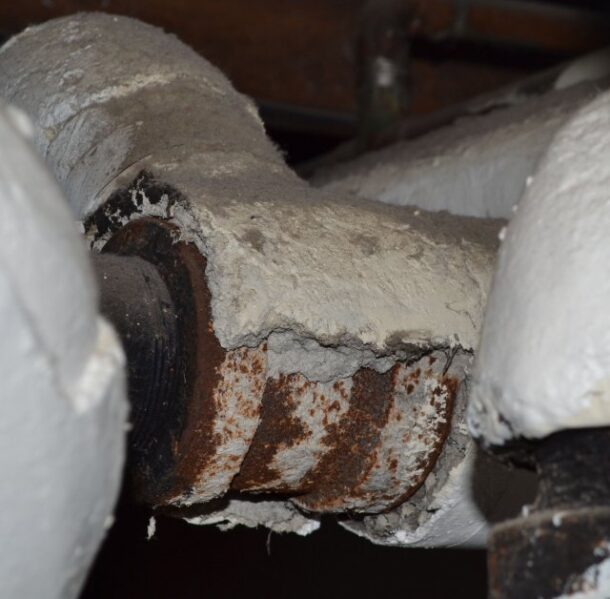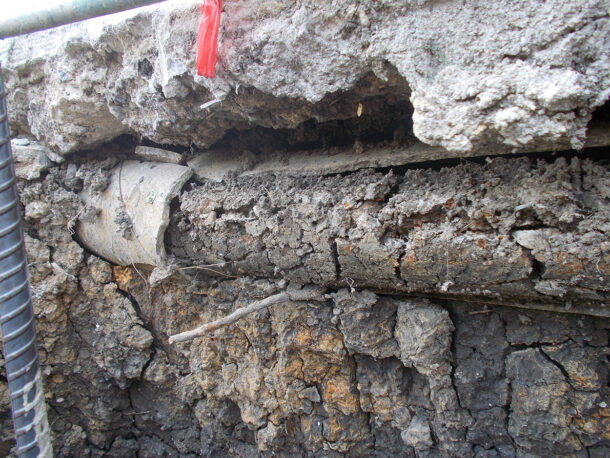The heat-resistant and insulating properties of asbestos led to its widespread usage in the building industry for quite some time. However, it poses serious health hazards when its fibers become airborne and are inhaled, causing lung cancer, mesothelioma, and asbestosis. This article will explore what asbestos is, where it can be found, and the dangers associated with it.
What is Asbestos:
Properties of Asbestos
Asbestos is a naturally occurring mineral composed of thin, fibrous crystals. It is durable and has high tensile strength, resistant to heat, fire, and chemicals, making it attractive for insulation, roofing, flooring, and other construction materials.

Different Types of Asbestos
There are six types of asbestos, each with unique properties and characteristics. The three most commonly used types of asbestos in building materials are chrysotile, amosite, and crocidolite. The other three less commonly used types are tremolite, anthophyllite, and actinolite.
Where Can Asbestos Be Found?
Asbestos can be found in various building materials, including insulation, roofing shingles, floor tiles, and cement. It can also be found in automotive parts, such as brakes and clutches, as well as certain consumer products like hair dryers.
The Dangers of Being Exposed to Asbestos:
Lung Cancer
Lung cancer is one of the most well-known health hazards associated with asbestos exposure. Asbestos fibers that are inhaled can get stuck in the lung tissue, causing inflammation and scarring, leading to cancer. Symptoms of lung cancer can include coughing, chest pain, and shortness of breath, among others.
Mesothelioma
Another serious health problem associated with asbestos exposure is mesothelioma. This is a rare form of cancer that affects the lining of the lungs, abdomen, or heart. Mesothelioma can take years or even decades to develop after exposure. Symptoms of mesothelioma can include chest pain, shortness of breath, abdominal swelling, and more.

Asbestosis
Asbestosis is a chronic lung disease that can occur after prolonged exposure to asbestos. It is caused by the inhalation of asbestos fibers, which can cause inflammation and scarring in the lungs. Similarly, symptoms of asbestosis can include shortness of breath, chest pain, and a persistent cough. There is no cure for asbestosis, and treatment options are limited.
Other Health Hazards
Several other health hazards are linked to asbestos exposure, including a buildup of fluid in and thickening of the lining of the lungs. These conditions cause similar respiratory issues.
Asbestos exposure is especially dangerous for those who have worked in industries where it was or still is commonly used such as the construction and manufacturing industries. For example, in Massachusetts, asbestos at job sites such as shipyards, power plants, and factories created heightened exposure due to the widespread use of asbestos-containing materials in these industries.
Asbestos Regulations and Remediation:
Asbestos Regulations in the United States
The use of asbestos has been heavily regulated in the United States since the 1970s when the Environmental Protection Agency (EPA) began to study its health effects. Today, the EPA and other regulatory agencies have established strict guidelines for the handling and disposal of asbestos-containing materials.
Asbestos Remediation and Removal
If asbestos-containing materials are found in your home or workplace, hiring a licensed asbestos professional is important to remove them safely and effectively. This may involve sealing off the affected area, using specialized equipment to prevent the release of asbestos fibers, and properly disposing of the materials.
Asbestos Awareness and Education
Finally, raising awareness about the dangers of asbestos exposure is important in preventing future cases of asbestos-related illnesses. Many people are still unaware of the dangers of asbestos exposure and may unknowingly be at risk. Therefore, it is important to spread awareness and educate the public about the risks associated with asbestos to help protect future generations’ health and well-being.
Conclusion
In conclusion, asbestos is a dangerous material with serious health consequences for those exposed to its fibers. The best way to protect yourself from asbestos is to prevent exposure in the first place and to seek medical attention if you believe you may have been exposed. Asbestos regulations and remediation efforts can also help prevent future cases of asbestos-related illnesses. By staying informed and taking the necessary precautions, we can protect ourselves and our loved ones from the dangers of asbestos.




Join the conversation: